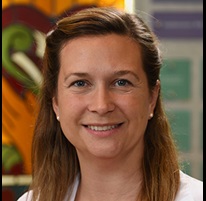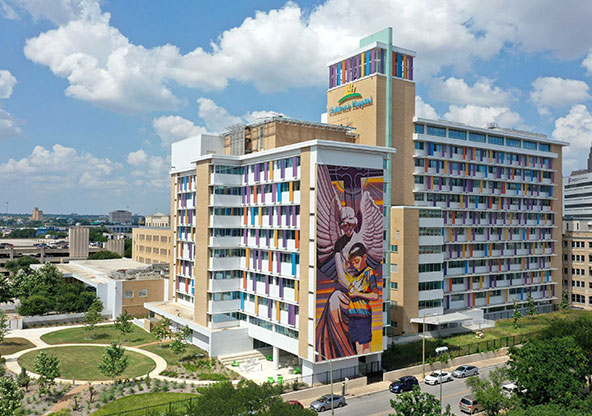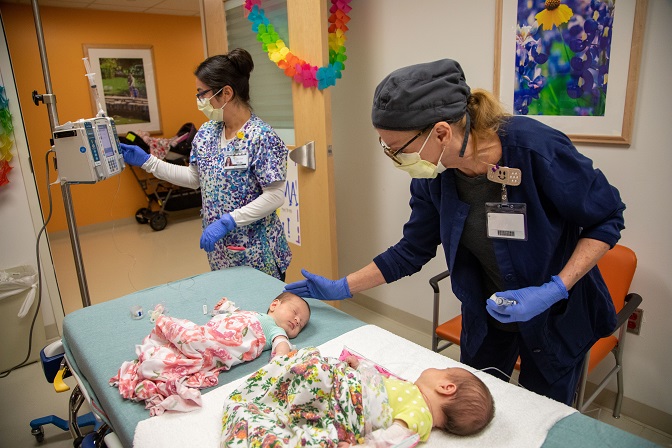Spinal Muscular Atrophy: Causes, Treatments & Symptoms
What Is Spinal Muscular Atrophy (SMA)?
Spinal muscular atrophy, also known as SMA, is a genetic disorder that affects the part of the nervous system that controls our ability to move our muscles voluntarily. Children with spinal muscular atrophy need care from experts in several medical fields.
This disease affects the major nerves coming out of the spinal cord called motor neurons, causing the muscles they control to weaken and get smaller. It is caused by the loss of both copies, from the mother and father, of the SMN1 gene. Individuals with SMA must rely on the SMN2 gene (a backup copy) to provide the important SMN protein.
However, this gene can only produce about 10% of the full-length protein that the motor neurons need. There are now treatments that target both of these genes (SMN1 and SMN2) to make more SMN protein to improve the health of the motor neurons in those with SMA. This diagnosis can have a wide range of presentations with different ages of onset, symptoms and rates of progression.

The Spinal Muscular Atrophy Program at CHRISTUS Children's brings together a team of experienced specialists in caring for children with this rare and complex condition. Dr. Melissa Svoboda, who specializes in neurology, leads the team at CHRISTUS Children's
What Are the Types of SMA?
There are four common types of SMA. However, now that there are early treatments available for SMA, these types may no longer be accurate as children who would have been a particular type are doing much better than predicted. Children with more severe types of SMA are usually diagnosed at a younger age and have the more limited muscle strength and functional abilities.
Type 1
The most common form of SMA typically leads to symptoms at birth or during infancy. Children with Type 1 SMA are not able to sit independently on their own. It can lead to respiratory failure requiring breathing and feeding support.
Type 2
Children with Type 2 SMA typically show symptoms between 6-18 months of age. These children master sitting but cannot walk or stand without support.
Type 3
Symptoms typically begin after 18 months of age. In Type 3 SMA, children can master walking but may lose ambulation.
Type 4
The adult-onset form of SMA typically begins after age 20 or 30.
Internationally Known for SMA Treatment
CHRISTUS Children's is a leader in treating Spinal Muscular Atrophy, or SMA. We provide FDA-approved treatment and have treated children from Turkey, Ukraine and Denmark and other parts of the world. Our caring teams are committed to providing high-quality service in a comfortable and safe setting.
Visit Children's

Spinal Muscular Atrophy Treatment Options
The Food and Drug Administration (FDA) has approved three treatment opportunities for patients with Spinal Muscular Atrophy. These treatments include Nusinersen (Spinraza), Risdiplam (Evrysdi), and onasemnogene abeparvovec-xioi (Zolgensma). Which treatment is used depends on many factors. Speak with your pediatric neurologist to decide which treatment is best for your child.
Spinraza – FDA approved in the US for all ages, infants through adulthood. Spinraza is given intrathecally (via a needle in the back directly into the spinal fluid) approximately every 4 months. However, 4 “bolus” injections or loading doses are required more frequently at the start of therapy every 2-4 weeks. It works by increasing the amount of SMN protein using an antisense oligonucleotide (ASO). For more information see: https://www.spinraza.com/
Evrysdi – FDA approved in the US for ages 2 months and older. Evrysdi is a DAILY oral (or G-tube) medication given at home every single day to treat SMA. It works by increasing the amount of SMN protein using a SMN2 splicing modifier. For more information see: https://www.evrysdi.com/
Zolgensma – FDA approved in the US for ages 2 years and younger. Zolgensma is a gene therapy given ONCE through an IV infusion. It requires a minimum of 3 months of frequent lab monitoring after infusion. It works by inserting the SMN1 gene into cells via a viral vector called adeno-associated virus 9 (AAV9). Then, the cells will be able to make their own functional SMN protein using the new SMN1 gene. For more information see: https://www.zolgensma.com/
Gene Therapy Breakthrough for Spinal Muscular Atrophy Patients
The FDA approved Zolgensma in 2019 as a one-dose gene therapy for children under 2 years old with SMA. Zolgensma is designed to replace the survival motor neuron (SMN1) gene. It is as close to a cure as we can get.
How is Spinal Muscular Atrophy Diagnosed?
If SMA is suspected, your provider will order genetic testing to determine if the SMN1 protein is missing.

What are the Common Signs and Symptoms of Spinal Muscular Atrophy?
- Hypotonia (“floppy” baby)
- “Frog legs”
- Feeding difficulties
- Weak sucking
- Tongue fluttering
- Weak cry
- Lack of motor development or delay in motor milestones
- Lack of reflexes
- Belly breathing
- Small muscles
- Proximal muscle weakness
Do Children with SMA Benefit from Physical Therapy?
Children with SMA Type 1 may benefit most from occupational and physical therapies that provide assistance with positioning and managing muscle and joint tightening.
In addition, therapy may provide opportunities for early mobility so children can experience age-appropriate activities. Adapting their environment can also help them participate appropriately.
For the child with SMA types 2 and 3, therapy focuses on increasing independent mobility as well as energy conservation techniques.
The therapists provide mobility options that are both efficient and safe for the child, while enabling them to participate actively in life skills and interactions between family and community.
International Patients
Contact CHRISTUS Children's International SMA Program
Please fill out this form to contact our U.S.-based or International Program Coordinator below to inquire about our international SMA program. We offer a comprehensive, specialized, and supportive concierge program for international patients interested in receiving SMA treatment at CHRISTUS Children's.
Services include help arranging housing while in San Antonio, rehabilitation services, laboratory testing to monitor child’s condition before and after Zolgensma infusion, and assistance in arranging medical treatment from additional pediatric specialists your child may need to obtain optimal results.
International patients can send an email to internationalsma@christushealth.org or fill out this form.
Patients in the United States
Goldsbury Center for Children & Families
333 N. Santa Rosa, 4th Floor
San Antonio, Texas
78207
210-704-4841
Residents in the United States may send an email to spinalmuscularatrophy@christushealth.org or fill out this form.

